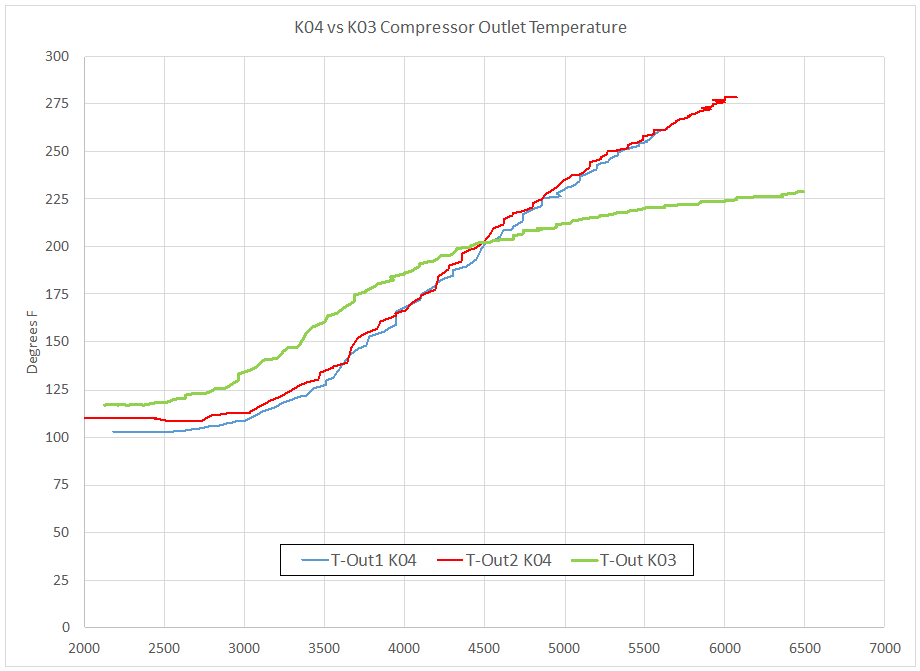I’ve read this comment a few times “at high rpm the K03 is just a hair dryer”. The claim is that once the turbocharger starts to reach the upper operating region it is doing nothing but producing hot air.
In general at high pressure ratios a compressor is going to generate hot air, and as the turbocharger compressor housing warms up the compressed air will become hotter as the ability of the housing to absorb heat decreases.
What is normally implied by the hair dryer comment is that the K03, being a smallish turbocharger, relative to other options for the B5 S4, becomes inadequate at higher airflow rates. To see how much of a hair dryer the K03 turbocharger is I matched it up with a pull I did on my car when outfitted with the larger BorgWarner RS4 K04 turbochargers.

The boost profile for each turbocharger is different, which matters a great deal, but that wasn’t what I was concerned with. My main interest was to compare the compressor outlet temperature of a K03 turbocharger with a reasonably aggressive boost profile, versus the K04’s with an aggressive boost profile.
Here are the results:

The outlet temperature of the K03 turbocharger is a good deal less than that of the K04. To me this is indicative of how important the boost level is versus the compressor efficiency when neither turbocharger is being operated at a point far outside of an efficient region of the compressor map. A K03 operating at 65% efficiency is not going to generate appreciably higher outlet temperatures when compared against a K04 operating at 70% efficiency. The K04 operating at a PR around 2.6, versus 2.2 for a K03, is more likely to generate results like those shown above.
